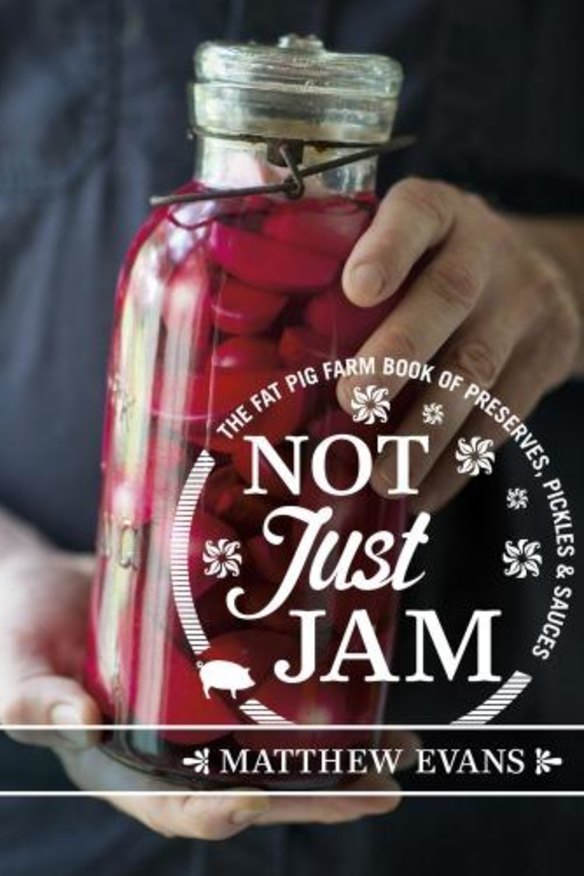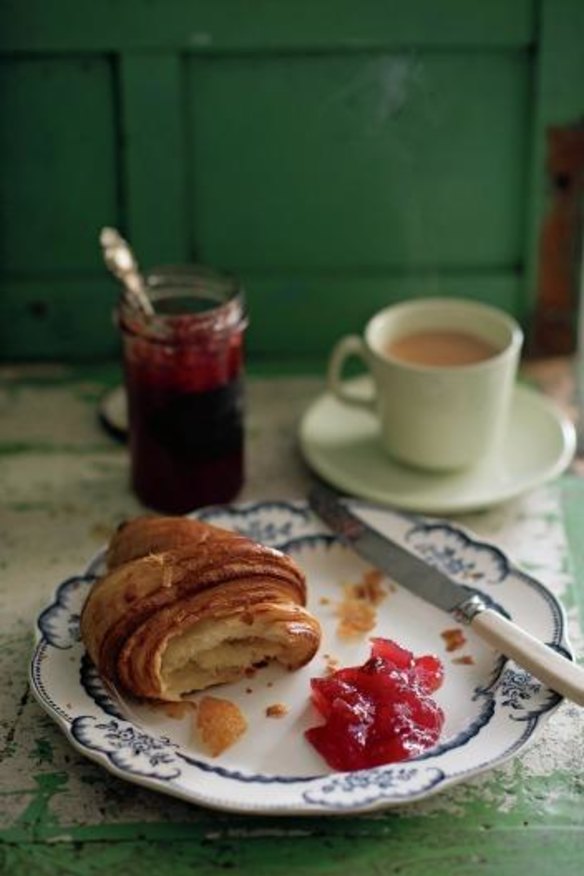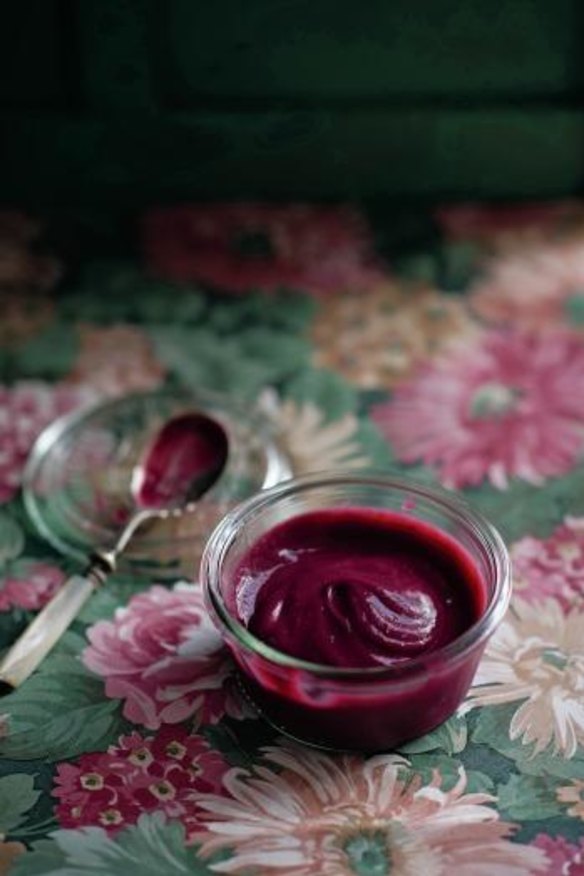Recipes from Not Just Jam, by Matthew Evans

BLACKCURRANT CURD
250g blackcurrants

130g unsalted butter
180g caster sugar
4 eggs, beaten

Wash and sterilise three 250ml jars.
Prepare the blackcurrants by putting them in a saucepan with 1 tablespoon of water. Cook over medium heat until the blackcurrant skins have burst and released all the juice. This is important, because you really want as much juice and flavour as possible, but overcooking can tend to make the curd taste a little tired.
Strain the fruit through a fine sieve into a jug and collect the puree, rubbing gently with a plastic spatula. If you press hard, you'll get pulp, which isn't ideal. You'll need 100ml of blackcurrant puree.
To make the curd, bring a medium saucepan of water to the boil. Put the butter and sugar into a heatproof bowl. Turn the water down to a simmer then set the bowl over the saucepan (make sure the bottom of the bowl doesn't touch the water) and stir until the sugar has dissolved.
Add the eggs to the butter mixture, then add the blackcurrant puree and whisk until well combined. Switch from the whisk to a wooden spoon and stir the mixture constantly until it thickens and coats the back of the spoon; this should take about 20 minutes or even less. (If you have a thermometer, it thickens at about 82C, which may make keeping an eye on it a little easier.) Pour through a clean sieve and into the sterilised jars. Store in the fridge for up to one month.
Allow to cool,and then store in the fridge for about two weeks.
HIGH DUMPSIE DEARIE
MAKES ABOUT 2 KG
500g pears
500g apples
500g plums
zest and strained juice of 1 lemon
1 thumb-size knob of fresh ginger, bashed
1.2 kg sugar
Wash and sterilise seven 300ml jars.
Peel and core the pears and apples. Peel and stone the plums and cut all of the fruit into large chunks. Put them in a jam pan with the zest and juice of the lemon and the ginger. Add enough cold water to just cover the fruit. Bring to the boil over high heat, then reduce the heat to medium and cook for about 30 minutes until the fruit is soft.
Fish out the ginger (or leave it in if you like it spicy) and add the sugar. Stir until the sugar has dissolved then increase the heat to high. Boil rapidly for about 15 minutes, remove from the heat and check the set.
Pour into sterilised jars and seal. Store in the pantry until opened, then store in the fridge.
STERILISATION
This is the big one. In the age of refrigeration we've often forgotten how much mould and yeast thrive when left unchecked. You can preserve things through excluding oxygen (tight-fitting lids), introducing an acid (pickled foods), and by adding enough sugar or salt. But even then it's important to start with really clean implements, and to store things in sterilised jars with sterile lids. So wash your storing jars or containers really well before sterilising.
THE HEAT METHOD
(A dishwasher is a good place to start)
Heat kills bugs, and bugs can cause your preserves to lose quality, or even go off. If you want to sterilise just one bottle, or a few jars, you can place them in a saucepan of cold water, on their sides, making sure they're full of water and submerged. Put their lids in there too. Bring this pot to the boil and simmer for 10 minutes. This will kill just about all the bugs you're worried about. The only downside of this method is that it is a little tricky to take hot bottles from a pot of boiling water, though there are special tongs on the market to help you. A good thing to note is that hot sauces and jams will crack a cold jar, and this method allows you to have your jars prewarmed ready to pour in a hot conserve.
Dishwashers, with a hot rinse cycle, also sterilise the jars, so that could be an easier method.
Be sure, when dealing with hot jars, not to put them onto a cold surface or they will crack. Always put them onto a wooden board. Cold jars will also crack if they have very hot things put in them, so warm the jars a little first, using warm water or similar.
The best recipes from Australia's leading chefs straight to your inbox.
Sign up